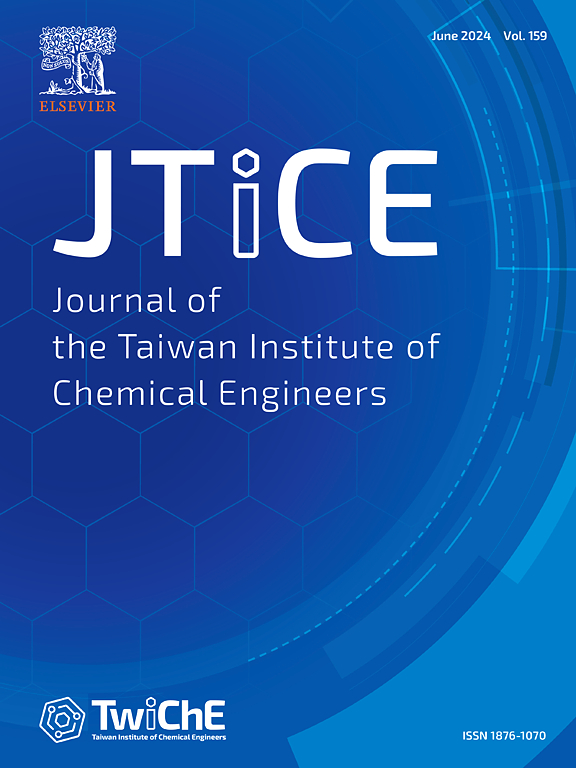Online weighted dynamic time-difference neighborhood preserving embedding for dynamic process monitoring
IF 5.5
3区 工程技术
Q1 ENGINEERING, CHEMICAL
Journal of the Taiwan Institute of Chemical Engineers
Pub Date : 2025-03-27
DOI:10.1016/j.jtice.2025.106035
引用次数: 0
Abstract
Background:
Process monitoring is an important technology for ensuring the safety of the operating process. Recently, many methods based on neighborhood preserving embedding (NPE) are designed for extracting the local structure of data space. However, data collected in actual industrial processes usually exhibit serial correlation. These methods lack attention to time information and ignore the discrepancy in the discriminability of latent variables to faults.
Methods:
In order to alleviate the drawbacks for better monitoring performance, a novel online weighted dynamic time-difference neighborhood preserving embedding (OW-DTNPE) algorithm is proposed. Considering the serial correlation, the DTNPE is designed to construct the low-dimensional space based on a new neighborhood selection criterion, which preserves the global–local time information and local space information of process data. In addition, the online weighting strategy is designed based on the deviation degree of each latent variable in real-time. The different weights reflect the correlation between latent variables and faults.
Significant Findings:
The effectiveness of the proposed algorithm is demonstrated by a real glycerol distillation process, a numerical case, and Tennessee Eastman (TE) process. The proposed OW-DTNPE outperforms the other comparison methods and shows great potential in real applications.

动态过程监测的在线加权动态时差邻域保持嵌入
背景:过程监控是保证生产过程安全的一项重要技术。近年来,人们设计了许多基于邻域保持嵌入(NPE)的数据空间局部结构提取方法。然而,在实际工业过程中收集的数据通常表现出序列相关性。这些方法缺乏对时间信息的关注,忽略了潜在变量对故障的可判别性差异。方法:为了改善监测性能,提出了一种新的在线加权动态时差邻域保持嵌入(low - dtnpe)算法。考虑序列相关性,基于新的邻域选择准则构建低维空间,既保留了过程数据的全局局部时间信息,又保留了过程数据的局部空间信息。此外,根据各潜在变量的实时偏离程度,设计了在线加权策略。不同的权重反映了潜在变量与断层之间的相关性。重要发现:提出的算法的有效性证明了一个真实的甘油蒸馏过程,一个数值案例,和田纳西伊士曼(TE)过程。本文所提出的低dtnpe算法优于其他的比较方法,在实际应用中具有很大的潜力。
本文章由计算机程序翻译,如有差异,请以英文原文为准。
求助全文
约1分钟内获得全文
求助全文
来源期刊
CiteScore
9.10
自引率
14.00%
发文量
362
审稿时长
35 days
期刊介绍:
Journal of the Taiwan Institute of Chemical Engineers (formerly known as Journal of the Chinese Institute of Chemical Engineers) publishes original works, from fundamental principles to practical applications, in the broad field of chemical engineering with special focus on three aspects: Chemical and Biomolecular Science and Technology, Energy and Environmental Science and Technology, and Materials Science and Technology. Authors should choose for their manuscript an appropriate aspect section and a few related classifications when submitting to the journal online.

 求助内容:
求助内容: 应助结果提醒方式:
应助结果提醒方式:


